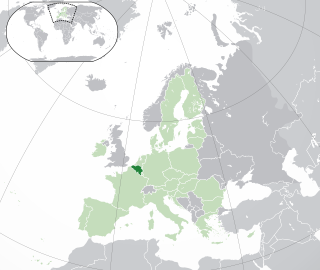Analysis
According to the Stephen Roth Institute for the Study of Contemporary Antisemitism, in 2000 there was a 30 percent rise in antisemitic manifestations over 1999, partly because of the Al-Aqsa Intifada. Holocaust denial has become a recurrent phenomenon in those years, and a movement for reaffirming values more consistent with traditional theology has been noted in the Catholic Church. [3] The rising trend in antisemitism observed in the year 2000 continued into 2001–2. About 100 antisemitic incidents were reported, including two violent acts in 2001 and one in early 2002. Both sides of the parliamentary parties and extra-parliamentary group, i.e., right-wing extremists, extreme left-wingers and anti-globalization activists, have intensified their antisemitic activity. The escalation in antisemitism during 2001, may be explained by several factors: "the impact of the Israeli-Palestinian conflict; the association made by the Italian public between the September 11 attacks and bin Ladin's implication that Israel had caused 'the birth of Middle East terrorism'; and the exploitation of this atmosphere by right-wing antisemites to intensify their antisemitic activity". [4]
The trend of 2001 showing a rise in antisemitism continued as well into 2002 and 2003. [5] According to the ADL opinion survey which was conducted in October 2002, 23 percent harbored strong antisemitic views across Italy. 58 percent believed Jews were more loyal to Israel than their own country, while 27 percent said Jews were more willing than others to use shady practices to get what they want. According to Abraham H. Foxman, ADL National Director "These findings are especially disturbing because they show that the old, classical form of anti-Semitism, which we had hoped was long gone in Europe, continues to be resilient". [6]
According to the Stephen Roth Institute for the Study of Contemporary Antisemitism, the number of antisemitic incidents reported in Italy in 2003 fell from about 150 in 2002 to about 80. A survey on racism in Italy commissioned by the Unione delle Comunità Ebraiche Italiane in 2003, revealed the penetration of certain stereotypes regarding Jews among Italian 14- to 18-year-olds: 34.6 percent of respondents said they agreed with the statement that global financial power is in the hands of Jews, while 17.5 percent agreed that the Jews should all go back to Israel. [7] [8]
In 2004, most antisemitic instances were verbal or written expressions, especially in Islamic websites and far left, anti-globalization sites and publications. [9] In April 2004, the ADL has reported that an opinion survey of adults in ten European countries, including Italy, found some decrease in antisemitic attitudes from its 2002 findings. According to the survey, in Italy, acceptance of five antisemitic stereotypes, such as "Jews are more willing than others to use shady practices to get what they want", and "Jews have too much power in the business world", has declined. [10]
Most antisemitic activity recorded in Italy in 2005, according to the Stephen Roth Institute for the Study of Contemporary Antisemitism, was expressed in propaganda and demonstrations, in which militants from both the left-wing and right-wing camps took part. [11] In a report on global antisemitism, submitted by the U.S. Department of State to the Committee on Foreign Relations and the Committee on International Relations in January 2005, it was noted that surveys conducted by independent research centers confirmed the persistence of some societal prejudices against Judaism. According to the report, different public opinion surveys indicated that antisemitism was growing in Italy. According to pollsters, "this trend was tied to, and in some cases fed by, widespread opposition to the Sharon Government and popular support for the Palestinian cause" that days. [12] [13] [14]
In 2006, the Second Lebanon War appeared to be the trigger for a number of serious antisemitic incidents in Italy. Anti-Israel demonstrations held during the year were marked by anti-Jewish manifestations. [15] During 2007, the 52 antisemitic incidents recorded in Italy included vandalism, graffiti, slogans during football matches etc.'. [16] According to the "Attitudes Toward Jews and the Middle East in Five European Countries" survey, which was conducted by the ADL and published in May 2007, 32 percent of Italian respondents answered "probably true" to at least three of the four antisemitic stereotypes tested. 48 percent of respondents thought that Jews were more loyal to Israel than to Italy. 42 percent of respondents thought that Jews had too much power in the business world. 42 percent believed that Jews had too much power in international financial markets, and 46 percent believed that Jews talked too much about what happened to them in the Holocaust. Another interesting finding, linking the Second Lebanon War with the antisemitic sentiments in Italy, was that 17 percent said that their opinion of Jews was influenced by the actions of the State of Israel. Of those, 47 percent said that their opinion of Jews was worse as a result of actions taken by Israel, while 36 percent said their opinion of Jews was better as a result of the actions taken by Israel. [17]
According to an Observatory on Anti-Jewish Prejudice of the CDEC Foundation, 69 antisemitic incidents were recorded in 2008, compared to 53 in 2007. They included vandalism, offensive graffiti and emails against Jewish individuals and institutions. According to a survey conducted in 2008 by the Ispo Institute directed by Professor Renato Mannheimer on behalf of the Monferrato Cult, 1 Italian out of 3 thinks Jews are unpleasant people, while 1 Italian out of 4 does not consider them “fully Italian". Based on an analysis of answers, the antisemitic individual tended to be mainly male, aged 50–60, self-employed, leftist and secular. [18] [19] In May, the same year, a national survey published by L'Unità found widespread negative attitudes towards Jews – 23 percent of the respondents stated that Jews cannot be considered "completely Italians", 39 percent stated that Jews have a "special relationship with money", and 11 percent stated that "Jews lie about the Holocaust". [20]
The Observatory of Contemporary Anti-Jewish Prejudice (L’Osservatorio sul pregiudizio antiebraico contemporaneo) recorded incidents of antisemitism in Italy from 2005 until 2011, with a particular focus on the internet. As the following table shows, the number of antisemitic incidents declined between 2009 and 2010, then, in 2011, rose to reach a new peak. [21]
| Recorded Incidents |
|---|
| 2005 | 49 |
| 2006 | 45 |
| 2007 | 45 |
| 2008 | 35 |
| 2009 | 47 |
| 2010 | 31 |
| 2011 | 58 |
A report, titled "Intolerance, Prejudice and Discrimination: A European Report," conducted by Friedrich Ebert Stiftung, a think-tank affiliated with Germany's Social Democratic Party, in April 2011, revealed high levels of antisemitism in Italy and a strong presence of antisemitism that is linked with Israel in a form of criticism of Israel. The study found that 37.6 percent of Italians believed "Israel is conducting a war of extermination against the Palestinians". More than 40 percent of Italians believed "Jews try to take advantage of having been victims of the Nazi era", and more than 25 percent of Italians agreed with the statement: "Considering Israel's policy, I can understand why people do not like Jews". [22]
According to the Milan-based Center for Jewish Documentation's Observatory on Anti-Jewish Prejudice, in 2012, antisemitic episodes almost doubled in Italy against 2011. Observatory researcher Stefano Gatti has said: "The data shows the situation is changing, evolving negatively [...] The boom might be due to more efficient data-gathering, but the episodes have undeniably increased". [23] According to a poll from the ADL released in March 2012, antisemitic attitudes in ten European countries, including Italy, remain at "disturbingly high levels": 61 percent in Italy has responded "probably true" to the statement, "Jews are more loyal to Israel" than their own country; 39 percent has responded "probably true" to the statement, "Jews have too much power in the business world"; 43 percent has responded "probably true" to the statement "Jews have too much power in international financial markets"; 48 percent has responded "probably true" to the statement, "Jews still talk too much about what happened to them in the Holocaust". Abraham H. Foxman, ADL National Director, has said that "The survey is disturbing by the fact that anti-Semitism remains at high levels across the continent and infects many Europeans at a much higher level than we see here in the United States". [24]
A recent study examined Antisemitism in Italy with field experiments in three areas: labor market, housing market, and social integration (amateur football). The authors found significant discrimination towards people with a Jewish-Italian name when looking for football club and an apartment, but not when seeking a job. Women with Jewish-Italian names were, however, less likely to suffer from discrimination [25]




